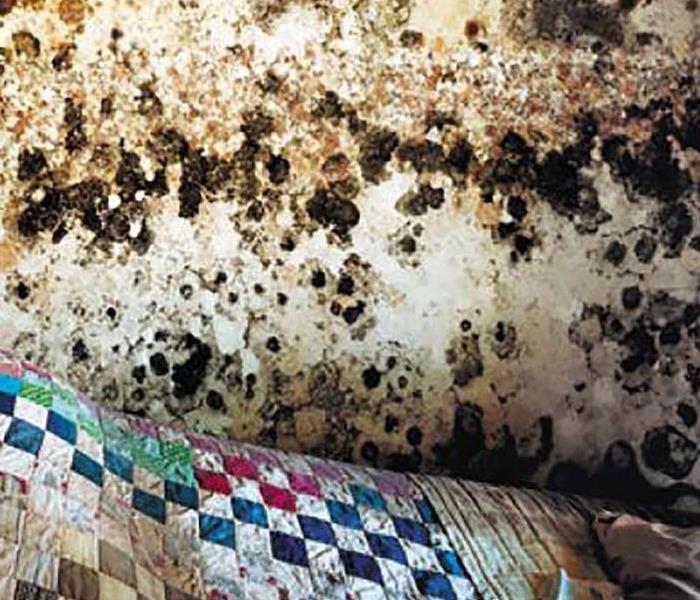General Mold Information
1/11/2018 (Permalink)
Here at SERVPRO of South Garland we hear all kinds of misinformation about mold. We want you to be informed and to have an understanding not a fear of this organism and its impacts on your home. So to start lets learn a little about mold in general.
- What exactly is mold? Molds are living microorganisms and forms of fungi like yeasts and mushrooms. Now that we have a basic definition of mold, let’s start debunking some common mold myths!
- Most of the information you find in the media and internet on “Black Mold” is completely bogus and horribly misleading. The fact is that the color of the mold as it appears to the naked eye cannot tell you anything about whether it’s toxic or not. This brings us to point #3:
- With over 100,000 species, mold comes in about any size, shape, and color you can think of, making it virtually impossible to tell what type of mold you have without a microscope.
- While there are over 100,000 species of mold, the good news is that you do NOT need to know what kind of mold you have to eliminate mold growth. Allmolds are treated in the same way. Since mold is a living organism, it requires food and water to survive. But controlling mold by eliminating food sources is very difficult since mold can feed off building materials, and the tiniest of organic matter like dirt, dust and debris. Thus the best way to eliminate mold problems is to eliminate water problems.
- Eliminating mold problems is important because the EPA (Environmental Protection Agency) estimates that we spend 90 percent of our time indoors, and that the air we breathe indoors is more polluted than the outdoor air. So indoor air quality matters a lot to our health.
- Mold is a natural organism that serves many useful purposes in daily life. It breaks down dead organic matter, helps make certain cheeses, and antibiotics like Penicillin. Mold only becomes a problem when it is found in elevated levels. Then, mold removal and remediation should be performed.
- Molds reproduce by releasing microscopic airborne spores that find their way to a habitable surface. Molds can grow on almost anything, including most building materials such as drywall, insulation, wood, etc. If enough water is present on these surfaces, the mold grows into active colonies and releases spores into the air.
- While mold grows most easily on porous organic surfaces such as drywall and unfinished wood, it can also grow on inorganic surfaces such as metal, plastics and glass when organic nutrients such as dust and debris are along with moisture.
- You can be exposed to mold by breathing in mold spores or touching and/or ingesting moldy items. And under ideal conditions, active visible mold colonies can grow in as little as one or two days.
- There are currently no federal guidelines specifying what constitutes an unsafe level of mold. But if you see visible mold growth or smell it, your environment almost certainly has elevated levels of mold.
- If nobody knows how bad mold is, should you care? Yes! A moldy home is unappealing to buyers, and it slowly destroys your home. It should be removed or treated as soon as possible.
- Tiny amounts of mold are in every breath you take. Only the cleanest environments, such as a sterilized hospital organ transplant room, are mold-free. A home will continue to have low levels of mold even after mold removal and mold remediation is finished.
- Everyone responds to mold differently, but certain groups such as the elderly, young children and people with autoimmune disorders are thought to be more at risk for the common allergenic symptoms associated with mold.
- Many homeowners’ insurance policies specifically list mold as an exclusion and will not cover mold-related claims. There are insurance policies that will cover mold related claims. You should not assume your policy covers mold. Chances are, it doesn’t. If you want mold insurance, ask for it, and review your policy carefully to make sure you understand what is and is not included.
Here at SERVPRO of South Garland your family’s health and well being are of the utmost importance to us. If you can see visible mold in your home give us a call at (972)278-7871. We want your home to be a safe place for you and your family to relax, and rest.




 24/7 Emergency Service
24/7 Emergency Service
